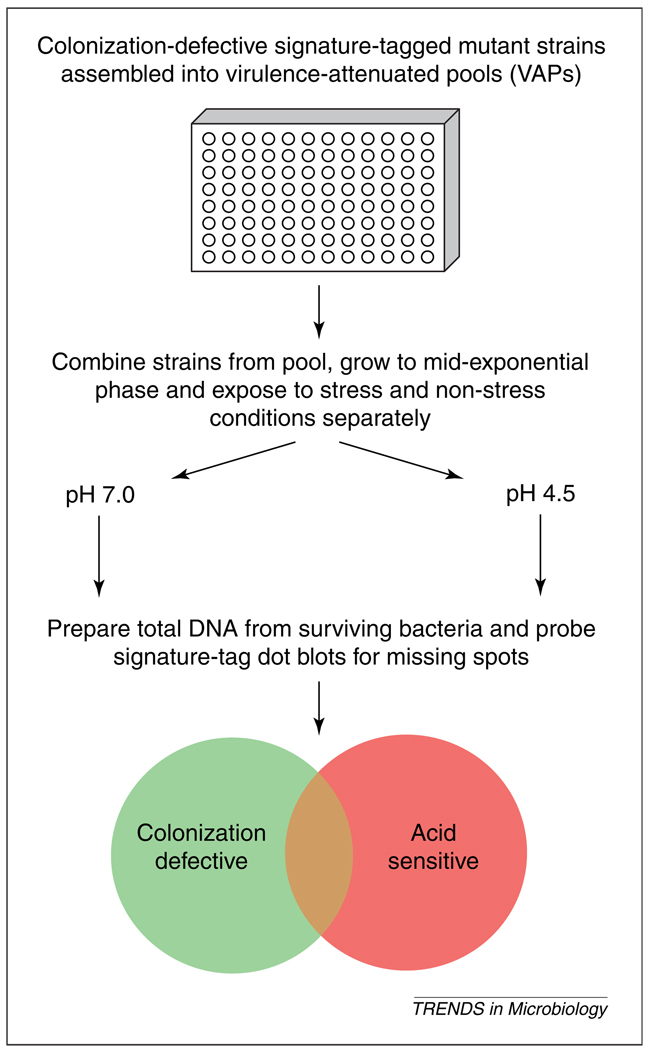Fig. 1.
In vitro virulence-attenuated pool (VAP) screening to assign putative in vivo functionality. Pools of signature-tagged (ST) mutant bacteria that were previously determined to be attenuated for colonization in an animal model can be systematically exposed to various in vitro conditions that mimic environs that would be encountered within the context of a natural infection. In the example shown, Vibrio cholerae mutants were exposed to acidic conditions that mimic the low pH environment encountered by the bacteria during the course of transit through the human stomach. The theoretical classes of mutants that can be determined are represented by the Venn diagram at the bottom of the figure, where some genes that are required for colonization are also required for acid resistance.

